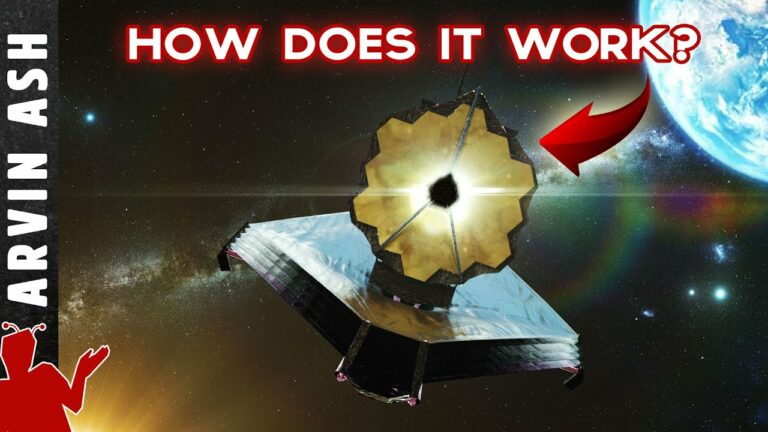It Can See the First Stars and Galaxies! James Webb Space Telescope JWST
In 2021, we launched a space telescope that’s 100 times more powerful than Hubble, called the James Webb Space Telescope. How does the JWST work? What makes it so powerful? And what might it see?
A space telescope is basically a digital camera, except is that it’s more powerful and is built to take pictures of things very far away.
To take any digital picture you need light, optics, and a sensor or recording device. The latter records the light. It’s made of millions of small pixels, which are the smallest element of the sensor that can interact with light to produce a current. The amount of light absorbed by the pixel determines its brightness intensity.
Since distant objects are very faint, space telescopes are designed to gather as much light as possible. This means that the JWST is designed with the largest folding mirror that would fit in a rocket (6.5 meters diameter vs Hubble’s 2.4 m), and can have high exposure times.
The JWST can capture more than 6.5 times more light than Hubble. And it’s designed to see infrared light, which is why its primary mirror is gold, since gold reflects infrared light better. Infrared has many advantages, like seeing through space dust better, and can observe things farther away and farther back in time, because the most distant objects are red shifted into infrared due to the expansion of the universe.
How it works: Infrared Light travels through space, hits the telescope’s primary mirror. It’s reflected onto the smaller secondary mirror then into what’s called the Aft-Optics System, which focuses and refracts the light before it goes onto the sensors (or cameras) located behind the mirrors.
Another difference between the JWST and Hubble is that it orbits the sun at about 1.5 million km away from earth instead of 547 km. Hubble orbiting so close to the earth leads to problems such as being in earth’s shadow for long periods, or overexposure due to the sun.
Instead of orbiting the earth, JWST orbits the sun at the the L2 or second Lagrange point. Lagrange points are special points in space, where gravity from the sun and earth perfectly balances the orbital motion of a satellite so that it stays put in a stable orbit without using much energy.
To prevent overexposure to the sun, JWST has a large sunshield protecting it from the sun’s rays, like a sun shade in your car.
We expect the JWST to see objects and light from some of the earliest history of the universe, including the formation of the first stars and galaxies. The images should be even sharper and higher resolution than Hubble not only because of the bigger mirror, but also because the JWST uses more modern and advanced instruments. For example, the camera design uses mercury cadmium telluride. It’s a crystal, grown in a lab that can convert infrared light into electricity directly.
There is also a spectrometer on the telescope allowing us to detect that different atoms and molecules on distant planets. By looking for things like water, oxygen, methane and ammonia we may be able to detect life on exoplanets. a chance we might see something that looks like life. Yes, the JWST could detect possible alien life.
Do not forget to share your opinion with us to provide you with the best posts !




0 Comments